Schneider Electric Fibre optic cables

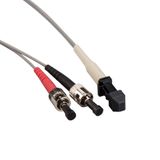
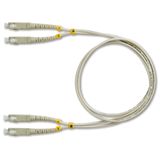
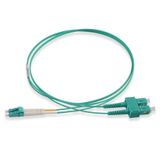
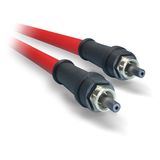


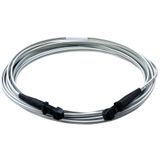


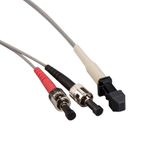
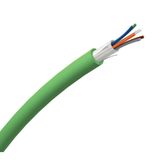

Schneider Fibre Optic Cables for enterprise and plant networks
This portfolio targets deterministic Ethernet, controls backbones, and campus links that must ride through EMI, lightning-induced transients, and ground-potential differences. Constructions cover tight-buffered indoor, loose-tube gel-free for riser/tray/campus, breakout for direct termination, and steel-tape or corrugated-steel armor where rodents or floor saws are a risk. CPR classes are available for EU builds (Eca…B2ca with s/d/a descriptors), with LSZH jackets for occupied spaces and UV-stable PE for outdoor runs. Factory pre-terminated trunks cut install time on shutdown windows and keep loss budgets predictable.
Schneider Singlemode Fiber for long-distance and mixed-vendor rings
OS2 G.652.D (and G.657.A1/A2 bend-improved) supports 1310/1550 nm windows with low attenuation (≈0.34 dB/km at 1310 nm; ≈0.22 dB/km at 1550 nm, application- and make-dependent). Bend-insensitive variants hold macro-bend performance around tight patching radii in crowded doors and swing-frames. Recommended for campus spurs, utility corridors, and high-availability rings tying PLC networks, historians, and building cores across halls. LC connectors dominate high-density frames; SC remains common on legacy gear; MTP trunks serve high-count backbones with cassette breakouts.
Schneider Multimode Fiber for dense rooms and short links
OM3/OM4/OM5 options simplify 10/25/40 Gb inside control rooms and data closets without transceiver changes across generations. Typical EMB values: OM3 ≥ 2 000 MHz·km, OM4 ≥ 4 700 MHz·km at 850 nm; OM5 extends SWDM use cases for multirate backbones in compact buildings. Tight-buffered 900 µm fibers speed field termination; pre-polished pigtails and fusion splice trays keep insertion loss around ≤0.1–0.2 dB per joint when executed to procedure.
Technical specifications and standards
- Cables and fibers per IEC 60793/60794; cabling rules per ISO/IEC 11801-1 and EN 50173.
- Flammability/smoke/halogen per IEC 60332-1/-3, IEC 61034, IEC 60754-1/-2; CPR labeling included on sheath print.
- Connectors and tests under IEC 61300; typical insertion loss targets: ≤0.3 dB/connector (UPC), ≤0.5 dB (APC), return loss ≥50 dB (UPC)/≥60 dB (APC).
- Pulling tensile ratings and crush resistance published per construction; aramid-yarn strength members allow 600–1 500 N pulls depending on fiber count.
Applications and compatibility
Control rooms, MCC corridors, and elevated conveyors adopt fiber to bypass VFD noise and earth loops; machine vision and IPC clusters use SFP/SFP+ links to maintain timing across isolated skids. For hazardous or damp corridors, dielectric armor avoids inadvertent bonding paths. Racks, patch panels, cassettes, and floor boxes follow the same 19″ geometry, legends, and earthing logic used elsewhere in the brand’s enclosures, so schneider fiber network lines drop into familiar hardware and documentation.
System architecture and installation practice
Plan cores as dual-homed rings or “H” spines with diverse routing; keep splice trays centralized and reserve slack managers at each panel. Respect bend radius (static ≥10× OD for standard fibers, ≥7.5× for G.657 types; larger during pulls). Observe pulling tension and use swivels on long conduit runs. Terminate shields only where specified; optical cables are dielectric—bond only metallic strength/armor as required by code. Label both ends with rack/port/fiber ID, polarity (A–B), and length; record end-face images after cleaning to reduce post-commissioning returns.
Integration with Schneider platforms
Fibers land on managed industrial switches, Modicon controllers, and edge gateways via SFP/SFP+ optics. Where building systems coexist, DALI/Ethernet gateways and room controllers occupy adjacent rack units; shared cable managers and numbering templates keep layouts consistent. Spacial/Prisma enclosures accept the same splice cassettes and adapter plates, so panel shops can repeat door cutouts and mounting coordinates across sites.
Selection criteria for B2B engineers
- Reach and speed: OS2 for campus spans and 10/25/40/100G cores; OM4 for dense rooms ≤150 m at 10G/25G.
- Environment: LSZH CPR classes for risers; UV/PE outer jackets outdoors; dielectric or steel armor by route risk.
- Density and service: MTP trunks with LC cassettes for fast, high-count backbones; breakout or tight-buffered for frequent field terminations.
- Bend regime: choose G.657.A1/A2 where door or drawer motion forces tight loops.
- Loss budget: match connector style (UPC/APC), splice method, and panel count to optic budgets; document targets in FAT sheets.
Applied consistently, these choices stabilize schneider fiber backbone wiring and keep ring repairs routine rather than bespoke.
Procurement and kitting for OEM and integrators
Fix a room kit: trunk type/length, cassettes and adapter plates, patch panel, splice trays and pigtails, coils/slack managers, labels, and cleaning gear. For campus pulls, add lubricants, pulling eyes, and breakaway swivels rated to the cable spec. Pre-terminate where shutdowns are short; keep one spare cassette per panel and one spare trunk per building core size for contingency.
Advantages of working with Bankoflamps
You receive project-specific pricing tied to your cable schedule, plus live EU stock visibility before locking install windows. Quotes typically land around the one-hour mark. Orders by EAN/MPN prevent variant drift; the portal shows lead times, shipment status, and downloadable price lists. Approved partners can use post-payment up to 30 days. We consolidate partials to cut freight and provide stable price-validity windows so phased builds stay predictable. Your account manager cross-checks CPR class, fiber counts, connector types, polarity maps, and panel cutouts against your drawings, so reels and trays arrive site-ready—no missing cassettes or mismatched adapters.